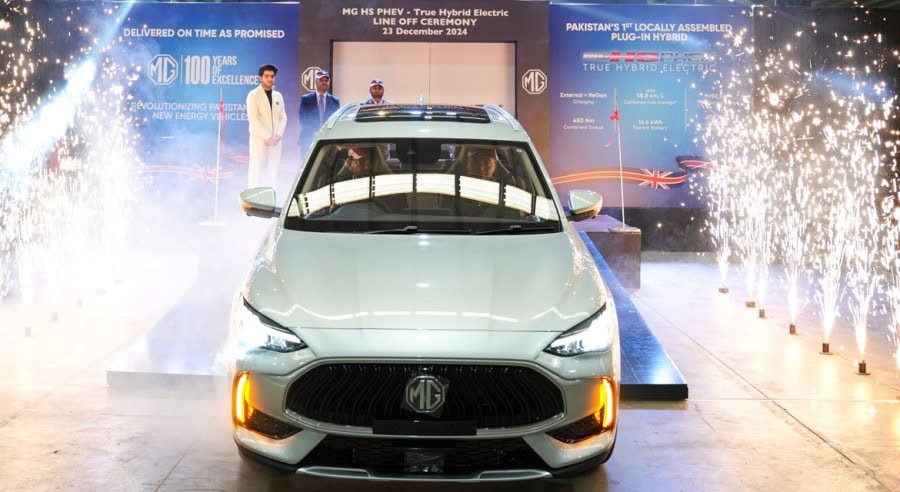LAHORE – As Pakistan unveils the New Energy Vehicle (NEV) Policy 2025–30, stakeholders have raised the issue of the pricing of new technologies in the market.
The NEV Policy 2025–30 introduces official classification for EVs, PHEVs, and hydrogen-powered vehicles as “New Energy Vehicles”—in line with global standards.
The policy aimed at reducing emissions and fuel dependence is taken as a step in the right direction. However, the local Hybrid Electric Vehicle (HEV) market remains largely unaffordable and fails to pass on the benefits of technological advancements to the average Pakistani consumer.
The most expensive HEV SUV in Pakistan—a seven-seater—carries an ex-factory price tag of Rs 16 million, while five-seater variants range from Rs 9.6 to 12 million.
Globally, hybrid vehicles deliver financial value when their purchase price does not exceed more than 10% of the cost of an equivalent petrol vehicle.
However, this benchmark is not practised in the Pakistani market. Here, the price gap between hybrids and their petrol counterparts is significantly wider averaging around 45%.
For example, a C SUV hybrid vehicle costs up to Rs 12 million, while similar C SUV conventional petrol cars cost Rs 8.0 million. In Pakistan, the price difference between hybrid and conventional petrol cars is approximately Rs4 million in the C SUV category.
“Despite policy support, the real advantages have not trickled down to buyers,” said Syed Asif Ahmed, General Manager Marketing Division at MG Motors, while urging the industry to think seriously about affordability. He suggested considering the option of shifting toward Plug-in Hybrid Electric Vehicles (PHEVs), which are better suited for urban use and offer real electric range.
Ahmed was also critical of how earlier tax incentives were structured, allowing traditional hybrids to be labelled as “New Energy Vehicles”, primarily to benefit large automotive players.
These subsidies neither helped the environment nor the people. They only benefited the principal companies and their local partners.
In contrast, PHEVs offer a more meaningful alternative, with pure EV driving capabilities for daily urban commutes and hybrid flexibility for long routes, helping tackle the range anxiety often associated with EVs.
Priced under Rs 10 million, Ahmed described the MG HS PHEV as “the best value-for-money vehicle in its class,” offering advanced tech, performance, and fuel economy.
While Pakistan’s NEV policy sets a progressive roadmap, industry execution remains key. With more PHEV models expected to enter the market, the question remains whether automakers will use these incentives to empower consumers or repeat the hybrid playbook of high margins and minimal environmental gains.
“The potential is enormous,” Ahmed concluded. “But only if we prioritise real consumer value and environmental impact over short-term profits.”



















